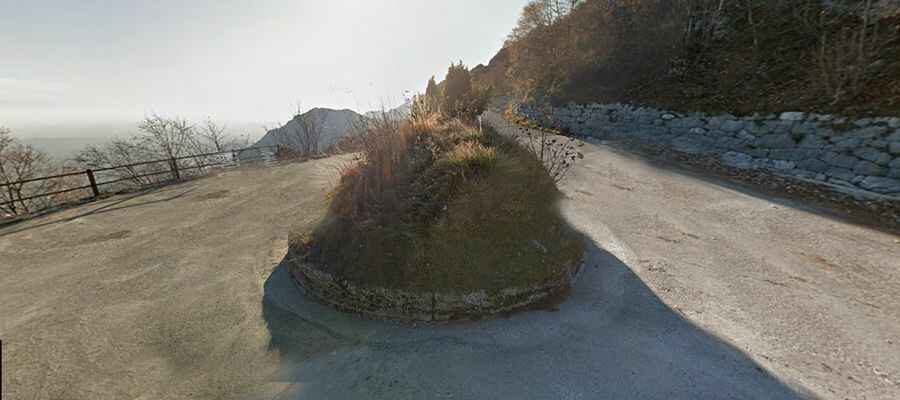A narrow road skillfully built with 28 hairpins to Monte San Simeone
Monte San Simeone is a mountain peak at an elevation of 1.208m (3,963ft) above the sea level, located in the Province of Udine in the Italian autonomous region of Friuli-Venezia Giulia.

Can you drive to Monte San Simeone?
Set high in the southeastern part of Carnic Prealps, the road to the summit, also known as Mont Sant Simeon, is totally paved, with concrete parts, and extremely narrow. It’s called Strada del Monte San Simeone. The road is mostly wide enough only for one car. If you don’t like narrow roads, better avoid it: it’s not wide enough for two cars to pass at the same time.
How long is the road to Monte San Simeone?
Starting at the paved Strada Provinciale 36 (SP36), the road to Chiesa di San Simeone, a mountain church near the summit is 11.1km (6.89 miles) long. It’s extremely steep, hitting a 12% of maximum gradient through some of the ramps. This road and a nice panorama from the plateau are the reasons that Monte San Simeone is also very popular with bikers. From Bordano they do more than 1000 meters of altitude in ascent and then return by the same road.
Is the road to Monte San Simeone defiant?
Located on the northern part of the country, near the Slovenian border, the thrilling road was skillfully built, with 28 hairpin turns and 9 unlit tunnels. The hairpin section runs largely in the sparse forest, so even at high temperatures there is at least some shade. This ascent is an absolute must for fans of winding routes.
When was the road to Monte San Simeone built?
The road was built shortly before the First World War to reach a fortress on the plateau. Today, it’s possible to see the remains of the former fortress. Monte San Simeone is not very high, but as it is standing isolated, its relative altitude differences make it quite important. And it is unique also in several other respects: historical, natural and as a valuable goal of outdoor activities. The summit hosts a church, Chiesa San Simeone, dating back to the 13th century, when for the first time the church on its high plateau was mentioned. The church was several times renovated, the last time in 1976 when it was completely destroyed by an earthquake. It had its epicenter just below Monte San Simeone. The nearest towns were all destroyed.